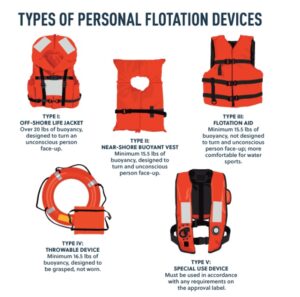ASA 103 Test Prep Guide
In order to properly prepare for this course make sure that you know the entire text enough to confidently answer the review questions at the end of each chapter
Pages 112 & 113
What is the definition of a sounding?
What are the three main units that soundings are measured in? How many feet are in a fathom?
Page 113
What is latitude? What is longitude?
What is one degree of latitude equal to?
One nautical mile is the equivalent to of latitude?
Page 91
What is the most aft storage compartment of a sailboat?
What is the lowest part of the interior of the boat?
What is the main reason that sailboats are equipt with bow & stern pulpits as well as lifelines? Where is the safest place to step on & off a vessel?
When can you discharge oil in the water? When can you throw packaging overboard?
Page 91 & 92
What is a safety harness, tether, & jack-line? What is the main purpose of this equipment?
Page 137 & 138
Be able to identify and know the functions of … Transom
Rudderpost Through-hull fitting Binnacle
Page 142
What are the many duties of the acting skipper aboard a vessel?
Pages 174 & 175
Who do you file a float plan with before you go coastal cruising?
Page 149
What are some important navigation aids and equipment?
Page 181
When & why would you reef a mainsail?
Pages 140 & 141
What is a masthead light used for? Where is it’s location? and it’s arc of visibility? What are the sidelights used for? Where is it’s location? and their arc of visibility? What is the stern light used for? Where is it’s location? and it’s arc of visibility?
What is the anchor light used for?Where is it’s location? and it’s arc of visibility?
What type of light configuration does a vessel under 65.5 ft need? less then 23 meters? less then 7 meters?
Page 80
What are the two types of flags that a vessel engaged in diving will hoist? Know names and colors.
Page 77
What is the inland and international rule for every vessel regarding a lookout?
Page 78
What is the inland and international rule for any vessel that is on an obvious collision course with any other vessel?
Pages 144-145
What are the pfd & fire extinguisher required on vessels 26-40 feet?
Pages 77-81 – especially the diagram on Page 81
What are the navigational rules and preferred courses to take in starboard/port tacks? Windward/leeward course?
Page 115
What is a day-mark (day-beacon)? How can they be identified (3 ways)?
Either refer to chart number 1 or the diagrams on pages 112-117 Know the symbol for the following…
Water depth Current Sunken wreck kelp, seaweed
mid-channel buoy can
nun
whistle buoy red bouy green buoy radio tower
preferred channel buoy
Pages 114-117
You will either travel through a channel to open water or from open water. Make sure you know how to correctly describe the following navigation aids Danger buoy
safe water buoy can
nun
preferred channel controlled area port side day-mark
starboard side day-mark
Page 119 & 120
What is anchor rode? What are two types of anchor rode and why are they used?
Page 121
What is the proper basic scope for overnight anchoring?
Page 120
What type of bottom would be best for a Danforth anchor?
Page 134
What should you do if on your first try you miss the mooring ball?
Page 121 & 122
What are the best three options when choosing an anchorage? What should you do first if you are dragging anchor?
Page 124
What do spring lines do when tying to a dock?
Page 176
How should you ties your boat when you are preparing to tow another boat?
Page 165
What is the minimum sail you would carry for very light wind?
Page 166
Where is the most important source of marine weather?
Page 169
What are sound signals that are used in rest riced visibility and for which type of vessel?
Page 166 & 167
What are the wind-speeds for the 12 different categories on the Beaufort scale?
Page 129
Describe heaving to and what are some good uses for this?
Page 179
Know how to tie and the best use for the following knots Figure 8
Bowline Clove hitch reef knot
round turn with 2 half hitches
Page 169
What does a rising barometer mean? Rapid changes?
Steady Falling?
Pages 167 & 168
Know the following cloud types… Cirrus
Cirrostratus Altostratus Nimbostratus Altocumulus Nimbostratus Cumulonimbus
Page 168
What three things should you do when navigating in reduced visibility, and why?
Page 93-97
Describe the three stages of hypothermia.
What would you do and in what order when treating someone with hypothermia? How do you delay hypothermia with a PDF?
Page 153
What precautions should you take when refueling?
Page 175-177
What are the 6 things you have to deal with when running aground? Why?
Page 177 & 178
What would you do if….
The mast breaks? The shrouds break? The forestay fails? The backstay breaks?
Pages 145-146
What are the different classes of fire extinguishers and what are they used for? What is the proper way to fight a fire?
Page 147 & 178
What are common types of visual distress signals?
Page 154 & 155
What would you do if your engine failed? What is the most common reason for engine failure?
Page 178
What should you do if a line gets fouled in your prop?



